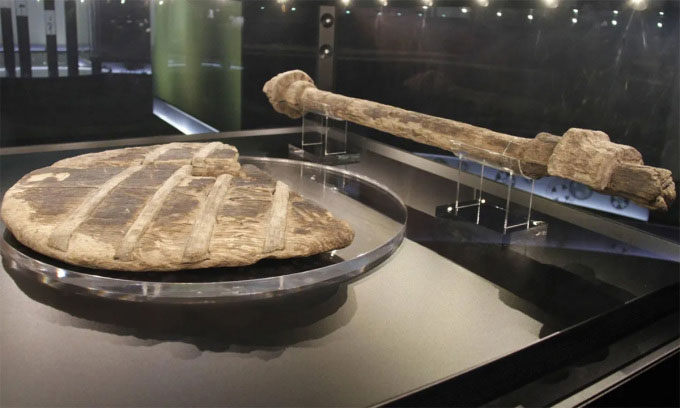The wheel may have been invented 6,000 years ago in Europe.
Copper miners in the Carpathian Mountains likely invented the wheel to make transporting ore easier.
Archaeological evidence of wheels and wheeled vehicles is abundant during the Bronze Age (c. 5000–3000 BC) across Europe, Asia, and North Africa, including painted battle scenes, miniature wheels, children's toys, burial carts, and even ancient texts. But because the wheel spread so quickly, scientists are unclear about exactly where and when it was first invented, or whether it was invented independently in different places and times.

The oldest known wooden wheel with an axle, dating back 5,200 years, was discovered in the Ljubljana marshes, Slovenia, in 2002. (Photo: Imago).
In a study published in the journal Royal Society Open Science on October 23, historian Richard Bulliet, a professor at Columbia University, and his colleagues presented how the wheel may have evolved. Bulliet suggested that the wheel was invented in the Carpathian Mountains, Europe, around 4000 - 3500 BC and spread in many directions from there.
Around 4000 BC, copper ore became harder to find, requiring miners to go deeper into the mines and haul wagons loaded with ore back out. Late Bronze Age examples of wagons found in the Carpathian region are rectangular with trapezoidal sides – similar to today's mining carts.
Using knowledge of ancient wheel systems based on archaeological evidence, the team used computational mechanics and design science to understand how the ancients transformed a simple set of rollers into a wheel-and-axle system. Because they needed to transport heavy baskets or barrels, the ancients may have placed rollers along a path, then shifted the rear roller to the front when needed.
The team believes that three improvements are needed to develop the wheel .
- The first innovation - the grooved roller - allowed the bucket to sit on the roller and move back and forth, eliminating the need for people to go around to change the roller. This allowed the miners to push larger carts into the mine.
- The second innovation was a set of wheels fixed to the axle, giving the car higher ground clearance to overcome gravel and other obstacles in the mine.
- The third innovation , the wheel moving independently of the axle, probably appeared about 500 years later, increasing mobility.
However, the team notes that the wheel has continued to evolve. For example, the invention of the radial ball bearing in 1869 led to significant advances in the 20th century automotive and machinery industries.
While it helps explain how the wheel was invented in Europe and spread from there, the new study may not be the last on the subject. " I think it's still possible that multiple civilizations invented the wheel independently," says Kai James, an aerospace engineer at the Georgia Institute of Technology and co-author of the new study.
- Magic wheel 'magic' adapted to all land terrain
- After thousands of years, the wheel has been 'reinvented'
- How was the wheel invented?
- Wheel - Great invention of mankind
- American company reinvents car wheels, eliminates rubber tires
- 300 million year wheel is the alien?
- Video: Porsche rear-wheel drive technology
- Psychedelic cars run on the road even though the wheel does not spin
- Mystery of the wheel
- Discovery of the mysterious 'galaxy wheel' near the Milky Way Milky Way
- Steering wheel driver instructs drivers when they are dazzled
- 4-wheel vehicles conquer almost all terrain
 Discovered an ancient centipede fossil 99 million years old
Discovered an ancient centipede fossil 99 million years old Discovered bat-like dinosaurs in China
Discovered bat-like dinosaurs in China Discovered a 200-year-old bronze cannon of the coast
Discovered a 200-year-old bronze cannon of the coast Discover 305 million-year-old spider fossils
Discover 305 million-year-old spider fossils